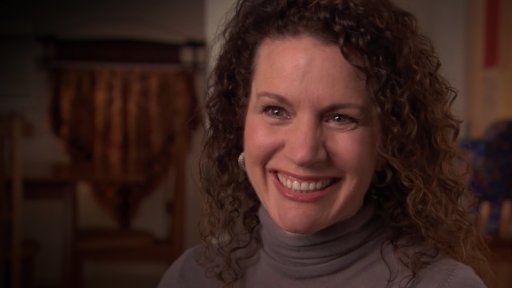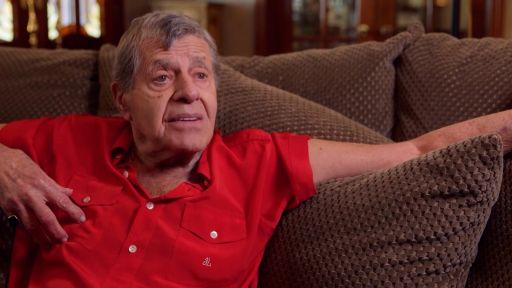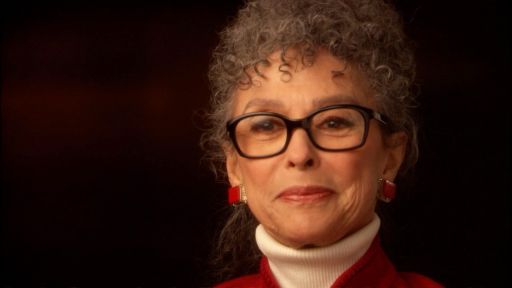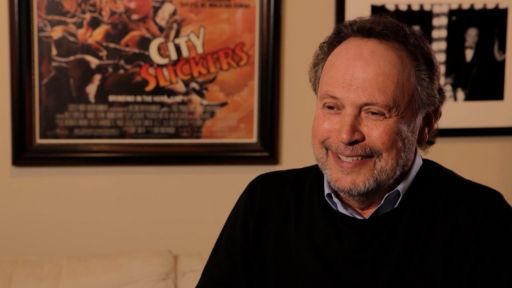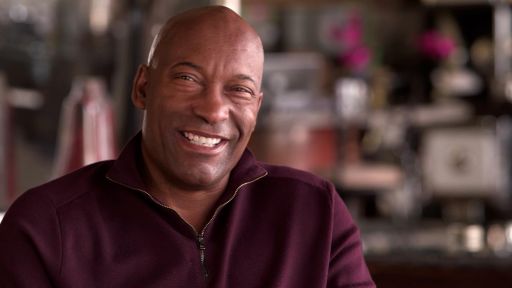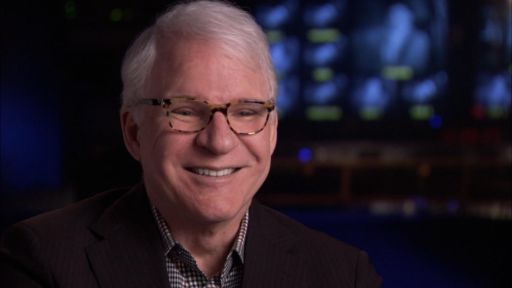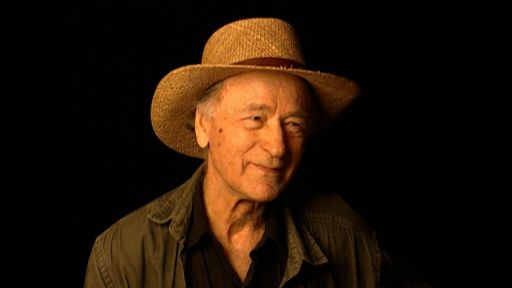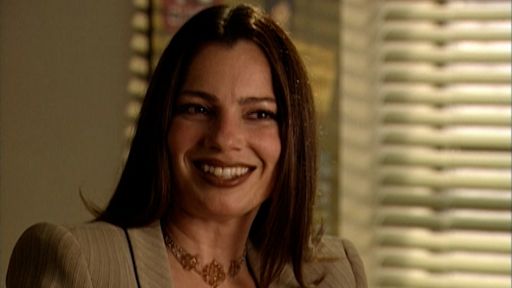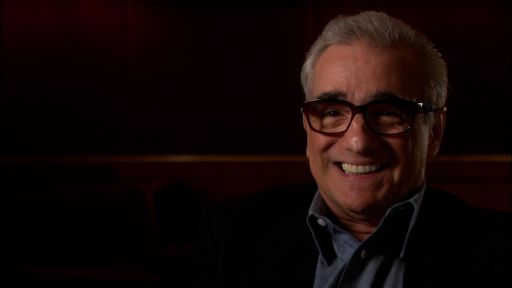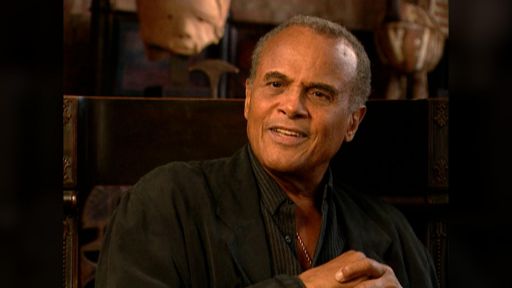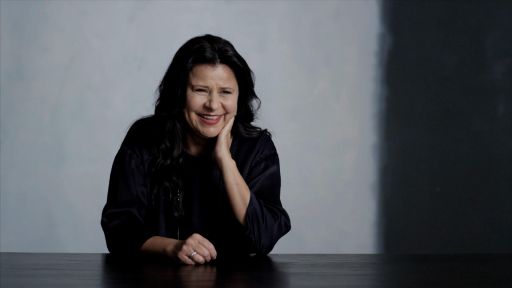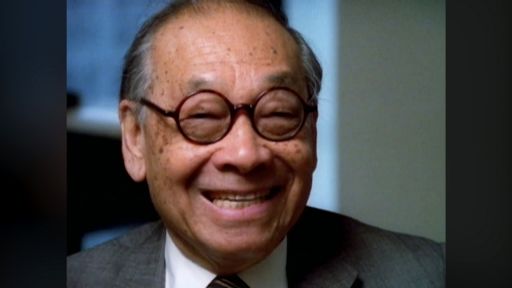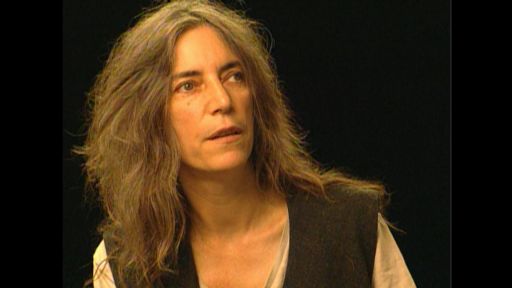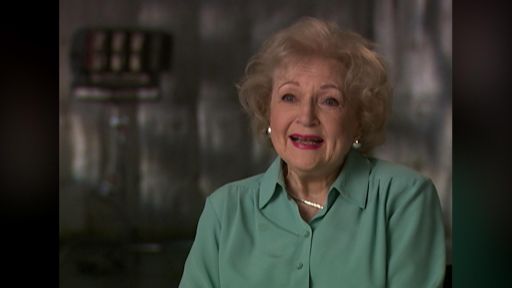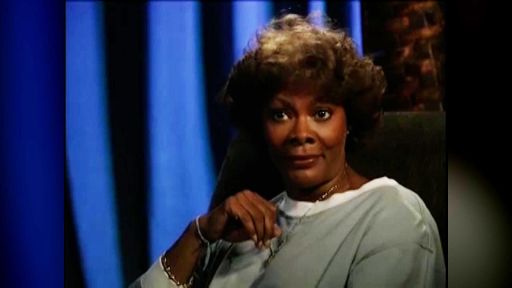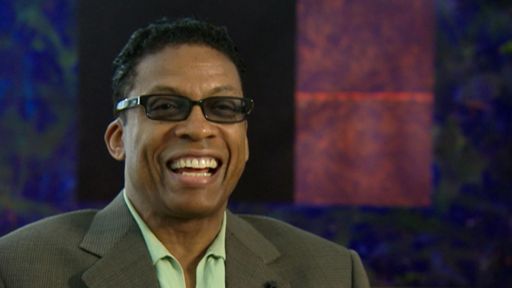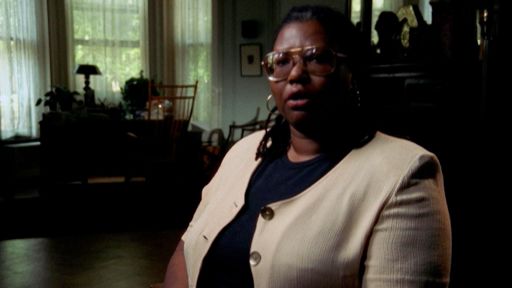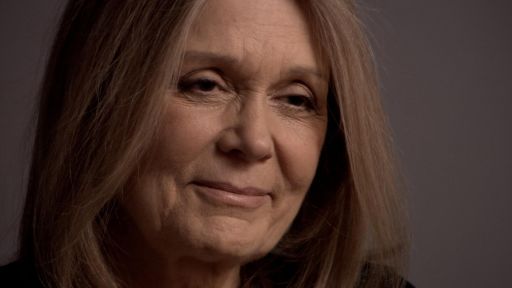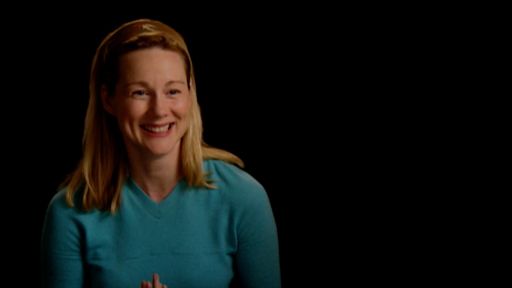TRANSCRIPT
- I first became aware of Mae West on probably some old, 11 o'clock, late night movie channel series.
I can't remember the year.
I can't really remember, but I would think that I really became very much conscious of her genius through Turner Classic Movies.
Because at some point in the past, they would have so many Mae West movies that I practically saw all of them on that black and white channel, that movie channel.
And that's how I became aware of Mae West.
And then, of course, when I was young, I was very much aware of Mae West when she did the movie "Sextette."
And I had a friend who'd worked at "Interview" magazine with Andy Warhol.
His name was Peter Lester.
And he had worked for "People" magazine as a freelancer.
And he'd gone out to interview Mae West in California in her last apartment.
And he was constantly telling me stories about her, about the furniture covered in plastic, the beautiful clothes with plastic hems so that they wouldn't get dirty on the floor, like long coats.
The gowns had those plastic protections, like three-inch hems of plastic around the hems.
I was interested in her because I thought she was marvelous.
I really have a great affinity to the Mae West movies because I was living in Paris, and I used to go down to Monte Carlo to work with Helmut Newton, a great photographer.
And Helmut Newton was a marvelous man, and all of his pictures just exuded sex, overtones and undertones of sexuality.
So Helmut and I were friends and his wife June, and she was a photographer.
They had a beautiful apartment, a very modern apartment.
So we'd go to dinner and then I suddenly had these films of Mae West.
Suddenly, I had those things, not the DVDs, those, what do you call them, videos, videos of the those thick things you put in the machine.
- Yeah, the VHS.
- VHS's.
Oh god.
(laughing) And I would take them and after dinner, we would look at these Mae West movies and we just would sit.
I remember when we looked at "She Done Him Wrong," we were laughing and we were screaming and we're saying, "Look at how wonderful she walks."
So I'm sure that that influenced a lot of our work that we did together, we collaborated, because it was Mae West.
And they weren't aware of Mae West at the time.
I think this was in the late, like '90s, early '90s, mid '90s.
And it was just a discovery to see Mae West.
It was so exciting and she was vital.
And she had a sense of humor, because there was always something behind her dialogue.
There was always a subtle entendre, a pun.
It was just quite, quite alluring and fascinating.
- [Interviewer] And the walk, that sort of power walk.
That's very unique to her.
- The power walk was original and most incredible.
The way she walked across the stage, and with an Edwardian hat, I mean, a portrait hat, that was so big with plumes.
And then she was sort of a throwback to the Edwardian elegance of Europe, England particularly.
Those clothes were very, very attenuated, yet they were not vulgar, yet she was sexy when she was not supposed to be sexy at the time.
And then the way she walked, the way she carried a walking stick, the way she shantayed and sashayed.
I kind of remember maybe I had once a glimpse of a shoe.
She stepped out of a carriage and you realized that she might have been on a very high, high platform shoe.
And so therefore, she was almost like an acrobat, because she had to wiggle her way in those gowns that were very tight-fitting and very over-the-top.
And she had to exude a kind of femininity that was not seen at the time when those films were made.
Sexuality was her power.
That's why she was empowered.
So she just went all out and swished and mm, and mm, and she made gestures, and mm, and she'd just do utterances, just to let you know that she's on top of that moment with Cary Grant.
"You can be had," was a wonderful line.
"Anytime now," you know?
She's got it.
She's got the moment when Cary Grant's gonna cave in, and she knows it, because she knows how fabulously powerful she is through her sexuality.
And that was a very powerful thing.
And I think that it's a long, and a sense of humor in Mae West.
Mae West with W.C. Fields with the goat in the bed is one of the most hilarious things I've ever seen.
I mean, just, there she is with Edwardian hats and bonnets and plumes and feathers and in a Western environment, but she still manages to be sexy with these bustles and these high hourglass-fitted jackets and gowns.
She's always sexy.
She's always sexy.
And sexy with a sense of humor.
It's not threatening.
Every line is just so beautifully Mae West, you know?
Cary Grant, "If you wanna help me, help me with my cape."
You know?
And then, he has to help her with the cape.
She gives orders.
She makes the rules in her movies.
She makes all the rules.
- [Interviewer] You know, it's interesting.
In terms of the clothing in the '20s, it's- - Yes.
- [Interviewer] You know, it's so antithetical to what all other women are wearing.
- Yes, yes, yes, because it is totally antithetical to what women are wearing in the '20s.
It's just, the '20s, they are very much like following the patterns of fashion, whatever was in fashion then.
It's either a bias cut dress or it's a suit with an ankle length skirt or it's a hat, a fedora hat, or something trimmed with a lot of fur.
There was a lot of fur around in the '20s.
Hollywood loved fur in the '20s because most of the big movie makers were former fur manufacturers.
So they insisted on having fur on everything.
But Mae just had that moment of wearing what she felt good in, and I think that she picked the clothes because they made her look taller.
She was certainly not a tall woman, but they elongated her silhouette, which was a very, very hourglass silhouette.
It became iconic when Schiaparelli apparently used her body, her anatomy, to make the bottle for the perfume.
That shape of the bottle become a very important part of fashion.
She certainly isn't out of fashion.
And she certainly isn't out of fashion, 'cause sometimes it creeps up, the Mae West silhouette, in fashion.
It's not popular at the moment, but sometimes it creeps up in beautiful ready-to-wear designers, particularly in Europe.
I mean, with Alexander McQueen did the most beautiful black satin evening gown.
Although that was inspired by French, Jacques Fath, but it was simply inspired by Mae West.
This very strong hourglass shape, that the shape of Schiaparelli's bottle is, the Mae West look, the sense of, it's a tight dress, but yet, it's a dress that makes you look extraordinary, elegant, in a very old-fashioned way.
It's got drama.
- [Interviewer] So actually, I had wanted to ask you to sort of set this up.
So she worked with several different costume designers, but most importantly, for "She Done Him Wrong" and then again for "Sextette," she worked with Edith Head.
- Yes.
- [Interviewer] Can you sort of just tell us who Edith Head was, maybe- - Well, Edith Head was, became the most important costume designer in Hollywood.
She started out doing clothes for Mae West.
By the time that she probably ended her career, she was the woman who dressed everyone.
From Princess Grace, Barbara Stanwyck.
I mean, there were male designers who did brilliant clothes.
Edith Head was the woman designer.
And she was this little school mistress of a designer.
She had these glasses and these perfect bangs and little suits.
She probably was intimidated by Mae West, but she certainly made Mae West stand out.
She got that sense of the Edwardian moment of the Mae West look, because the Mae West look is all about corsets, underpinnings, over the kill in jewelry, overkill in jewelry, overkill in diamonds, overkill in doodads and overkill in rings.
Everything is overkill, but it manages to look incredible.
Her hair is overkill because it's all Marcelled up to the roof.
In "She Done Him Wrong," it's Marcelled and Marcelled and Marcelled and Marcelled.
Everything about her is overkill.
The dresses are long.
You never see her in a street length anything in a movie.
They're always to the floor clothes, because it elongates her.
It does not, you don't chop it off with a knee length coat or knee length skirt, even in the '50s or something when she's done a movie in the '50s.
It still is long.
Even in "Sextette," it's a long coat.
In "Myra Breckinridge," it's a long coat.
So this is a throwback to a time when she must've seen something or experienced something in her Vaudeville days when she must've seen photographs or something that interest here, that this was the way to look, and she kept it throughout her life.
- [Interviewer] That's so true.
Actually, I have a photo of the shoe.
I wanted to show it to you, get your take on it.
- Show me, show me the shoe.
Show me the shoe.
Can somebody grab my light- - See.
(laughing) What, what?
(interviewer laughing) And this is Mae West's shoes?
- Yes.
- Oh, this is genius.
What, let me look at it again.
(interviewer laughing) Oh my god, well, let's talk about the shoe, please.
That's amazing.
Again, her genius.
She had a sandal, a superimposed sandal on a platform, so it gave her more inches, but it was a sandal built onto like a platform, like a ship.
It's like extraordinary.
That's where she was brilliant.
She made herself look long, like an exclamation point, but you see, she had the hidden secret of the platform.
The first film, "She Done Him Wrong."
And when I look at movies, I look for every detail.
I'm scanning looking for the room, the way the sconces are, the pillows, the sofas, how people are walking, getting in and out of the carriage.
And I saw the hint of a black platform when she stepped out of that carriage.
And those shoes that I've seen this shoe now, it's a super compose, the way people used to wear in Venice in the 17th century.
Chopines, they called them the chopines, and they would have these shoes that were almost like bound feet.
They would be five, six, seven, eight inches off the floor.
She must've seen a picture of that and she went for it.
There's evidence of that, and I think that's extraordinary.
I mean, and this is where she's a precursor, because there is Lady Gaga.
Lady Gaga wears shoes like that.
Well, she did used to wear shoes like that when she was performing.
I witnessed her rehearsing backstage in an arena for a Mick Jagger concert in maybe 2010 and 2011.
I've never seen anything like it.
She was in a jumpsuit and these high platform shoes, high.
And she was rehearsing by herself in a corner.
And when she got on that stage, I mean, I've never seen anything like it.
It was like the most professional, super thoroughbred horse in these platforms.
Mae West was like that.
All Mae West had to do was sort of glide back and forth in the shoes to make herself taller.
So she thought of everything to give herself power.
She made herself taller with a shoe that was a platform sandal.
It had a platform and then she had it glued onto yet another platform.
So it was like an old ship, like in the olden days, like Cleopatra's barge on her feet.
Made her taller.
For serious film watchers, it can be very, very invigorating to look at her and think, well, look at these clothes.
Look at the way she's dressed.
Look at the way she's dressed.
Even when she's undressed, she's dressed.
She's not sitting around there in a nude or chiffon chemise.
She's dressed.
She's still corseted and laced up.
In my historical estimation, they were only dressed that way in Edwardian England and Europe.
Women in courts of Europe were dressed like that.
Corseted, maids dressing them up with layers and layers.
Even her wedding dress in "I'm No Angel," her potential wedding dress, was not even a wedding dress that looked like someone else's wedding dress.
It looked like almost, well, like a performance artist's dress.
It looked like something she was gonna perform in.
And then they sashay around the maze.
They're sashaying and dancing around with it.
This is very modern.
This is very unseen in the '30s.
This is a very unseen moment in the history of film.
She was more European at the time.
She was more Lillie Langtry in England, you know?
She was more the courtesans of the Edwardian era, the courtesans, the women who were kept in great splendor and lived in these beautiful houses and had white Russian wolfhounds.
She was of that era.
She certainly was, as Colette said, a very European woman.
She was not typically American.
I mean, most American women would be shocked at the way Mae West behaved, spoke, walked, dressed, and acted.
There's no one like Mae West in Hollywood at that time.
There was Marlene Dietrich in the '30s.
There was Katharine Hepburn in the '30s.
Katharine Hepburn in the '30s.
There was another kind of power.
Because Dietrich had a certain kind of power, sort of androgynous sexuality.
Katharine Hepburn was walking around dressed like a man in pantsuits and trouser suits the same time as Dietrich.
But Mae West was all, all, all hourglass silhouette and sexy and different and herself.
And she did not try to copy any Hollywood trend.
And therefore, she remained a very powerful iconic image.
I think today that is what is relevant about Mae West.
You realize her power while watching the film and being entertained.
You realize this woman is unique.
This is something we haven't seen.
Just going back, "She Done Him Wrong," the first moment you see her in "She Done Him Wrong," she's riding in a carriage, and she's got a parasol, very Edwardian.
Who's riding in a carriage if it's not like, you know, Edwardian?
And the women on the sidewalk in the streets are turning their backs and not speaking to her.
And it's just that she's giving that subtle like, "Ew, you don't wanna speak to me?
I don't need to speak to you.
I've got my carriage.
I've got my style."
And then the carriage moves forward and the men are waving at her and saying hello.
And she nods to the men.
So she's always very, very respectful to the men's respect for her sexuality.
It's very respectful and it makes her feel happy in the film.
So I think she must've brought something very unique to the film world, and Cary Grant must've been very impressed with her.
Because he's like the young Cary Grant is one of his first films.
And she actually upstages him in the film.
And it works.
It does work.
It works for the film, "She Done Him Wrong."
And it's extraordinary.

